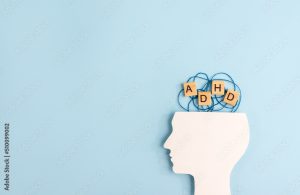Generalized Anxiety Disorder (GAD) is a mental health condition characterized by chronic and excessive worry about everyday events and activities. Unlike the occasional anxiety experienced by most individuals, GAD involves persistent and uncontrollable worries that can significantly impact daily functioning and quality of life. This article aims to provide a comprehensive understanding of GAD, exploring its symptoms, causes, diagnosis, and treatment options.
What is Generalized Anxiety Disorder?
GAD is more than just feeling anxious; it’s a sustained mental health condition identified by ongoing, excessive anxiety and worry about various activities or events. Individuals with GAD often find it difficult to control their worry, even when they realize it’s more intense than the situation warrants.
Key Symptoms of GAD
- Excessive, ongoing worry and tension.
- Restlessness or feeling on edge.
- Difficulty concentrating.
- Irritability.
- Muscle tension.
- Sleep disturbances, like difficulty falling or staying asleep.
These symptoms are persistent and can occur on more days than not for at least six months.
Causes of GAD
The exact cause of GAD is not fully understood, but a combination of factors is believed to contribute:
- Genetics: GAD may run in families, suggesting a genetic component.
- Brain Chemistry and Function: Imbalances in certain neurotransmitters in the brain may contribute to GAD.
- Life Experiences: Traumatic or negative experiences, particularly in childhood, can increase the risk of developing GAD.
- Personality: People with certain personality traits, like being a perfectionist or having a tendency to avoid risk, may be more prone to GAD.
Diagnosis
Diagnosing GAD involves a comprehensive evaluation by a mental health professional. This process typically includes:
- Discussing symptoms, thoughts, emotions, and behavior patterns.
- Reviewing personal and family medical histories.
- Conducting a physical examination to rule out other causes for symptoms.
- Using psychological questionnaires or assessments.
There’s no specific test for GAD, so diagnosis often relies on a detailed description of the symptoms.
Treatment Options
GAD is a chronic condition, but it can be managed effectively with treatment. Treatment usually involves psychotherapy, medication, or a combination of both.
Psychotherapy
Cognitive-behavioral therapy (CBT) is one of the most effective forms of psychotherapy for GAD. It teaches individuals to recognize and change thought patterns and behaviors that lead to troublesome feelings.
Medication
Several types of medications are used to treat GAD, including:
- Antidepressants, particularly selective serotonin reuptake inhibitors (SSRIs) and serotonin-norepinephrine reuptake inhibitors (SNRIs).
- Anti-anxiety medications, including benzodiazepines, though these are generally used for short-term relief due to their addictive potential.
Lifestyle Modifications
In addition to medical treatment, lifestyle changes can help manage symptoms. This includes stress management techniques, regular physical activity, adequate sleep, and a balanced diet.
Challenges and Misconceptions
Living with GAD can be challenging, as it can interfere with work, school, and relationships. There are also misconceptions about GAD being simply a case of “nerves” or something a person can easily control. Understanding that GAD is a legitimate mental health disorder is crucial for effective treatment and support.
Conclusion
GAD is a complex and often misunderstood condition that requires careful management and understanding. With the right treatment and support, individuals with GAD can lead fulfilling lives. Awareness and education about GAD are key in reducing stigma and encouraging those affected to seek help.




